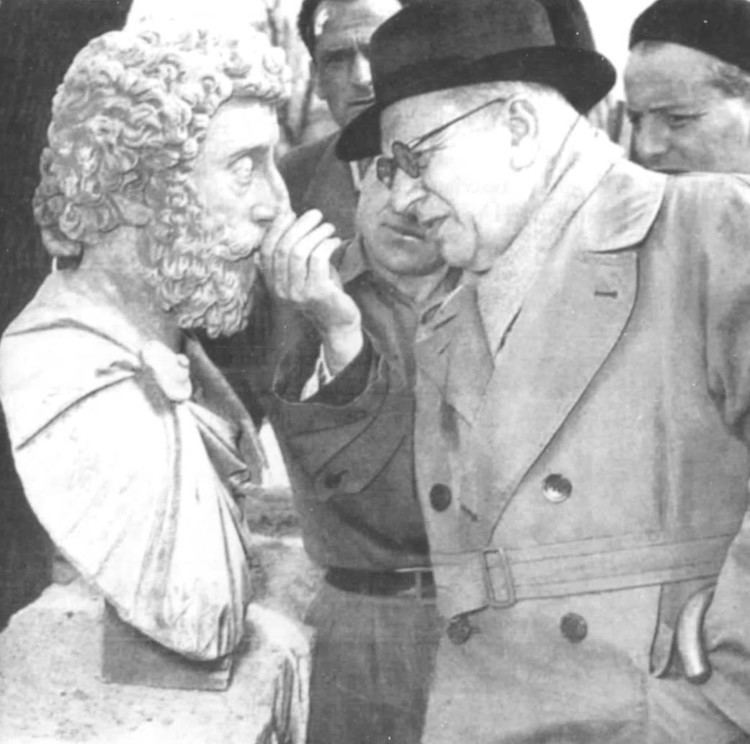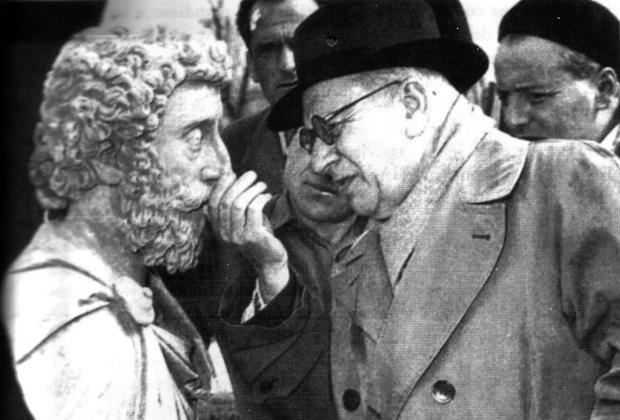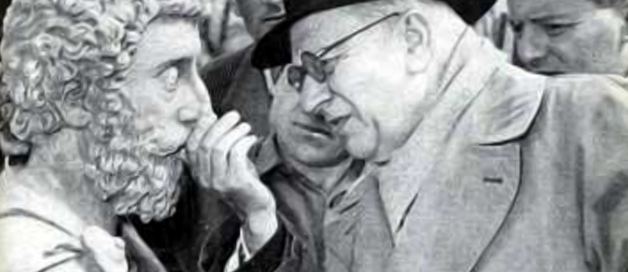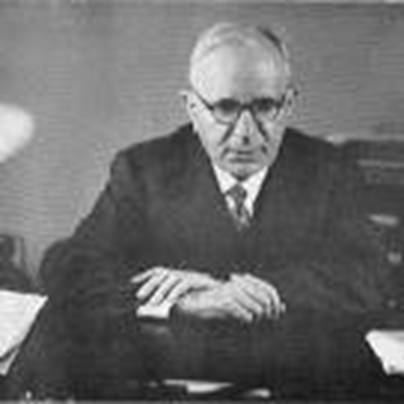Name Amedeo Maiuri | ||
 | ||
Books Roman painting, The Phlegraean Fields: From Virgil's Tomb to the Grotto of the Cumaean Sibyl, Pompeii, Herculaneum | ||
Pro loco hercvlanevm villa amedeo maiuri ercolano na
Amedeo Maiuri (January 7, 1886 - April 7, 1963) was a renowned Italian archaeologist, famous for his archaeological investigations of the Roman city of Pompeii which was destroyed in the eruption of Mount Vesuvius in August of AD 79.
Contents
- Pro loco hercvlanevm villa amedeo maiuri ercolano na
- archaeologist amedeo maiuri ancient history iitutor
- References

Born at Veroli, Italy, from 1914 until 1924 the young Maiuri directed the Italian archaeological mission in Greece, with a focus on Rhodes and the construction of a new museum there.

In 1924, Maiuri was installed as the chief archaeologist of Pompeii, serving as director until 1961. Maiuri's work at Pompeii was revolutionary and he exposed many remains, and proposed chronologies, that are still at the focus of scholarly discussion. Maiuri's work focused on one of excavations below the destruction level when he chose to excavate one of the most famous houses of Pompeii, the House of the surgeon. He excavated the Casa dell'Efebo in Pompeii, and discovered a small bronze statue known as the Placentarius, which is now housed in the Naples National Archaeological Museum.

Maiuri excavated other cities destroyed by the eruption of Vesuvius, such as Herculaneum.

He rediscovered the Cave of the Cumaean Sibyl in May 1932. The Cave is a trapezoidal dromos or passage over 131 meters long running parallel to the side of the hill and cut out of the volcanic stone.
The few remains of the Tiberian villa Damecuta are the result of excavations done between 1937-48 by Maiuri (who also excavated Villa Jovis), on land donated to the Italian Government by Axel Munthe, celebrated author of The Story of San Michele.
His book, L'anfiteatro flavio puteolano (1955), is considered to be the definitive monograph on the subject of the Flavian Amphitheatre in Pozzuoli.
The model of the torch used in the 1960 Olympic Games in Rome was inspired by Professor Maiuri from torches reproduced on ancient monuments.
Maiuri died in Naples in 1963.
